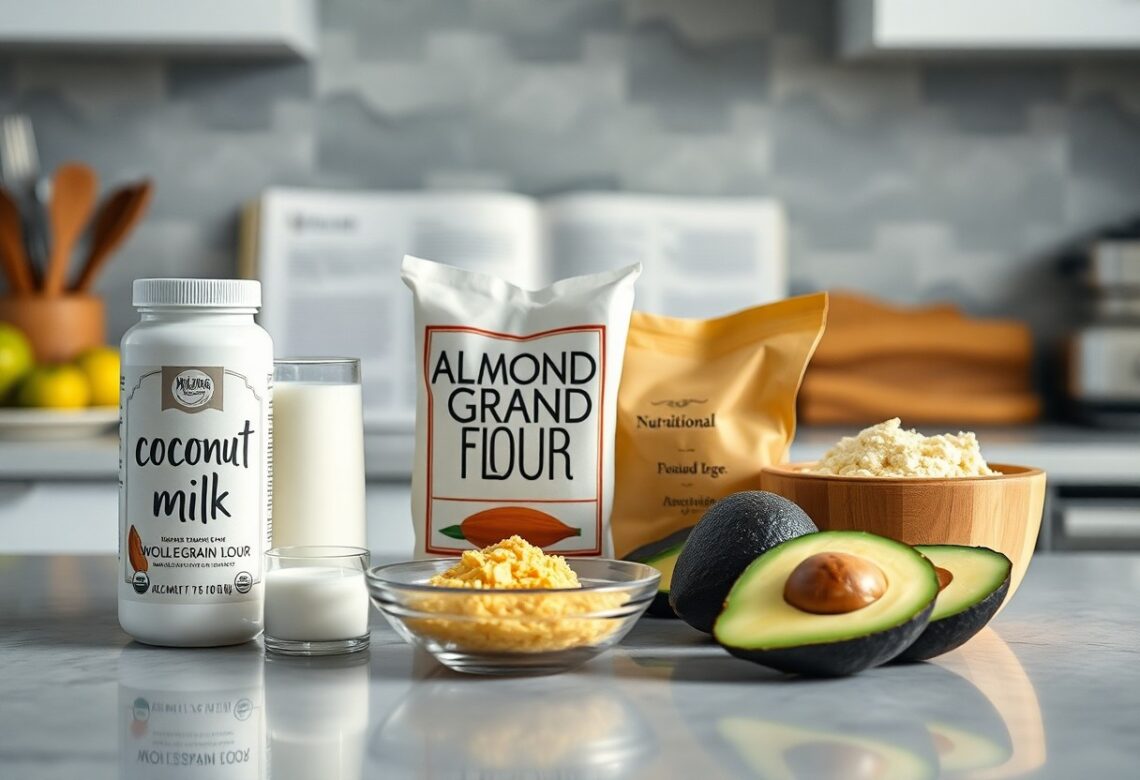Most home cooks encounter moments when they need to make healthier choices in the kitchen, whether due to dietary restrictions or a desire to improve your overall well-being. This guide will equip you with easy and practical substitutions to enhance the healthfulness of your meals without compromising flavor or texture. From swapping out common ingredients for nutrient-dense alternatives to reducing unhealthy fats and sugars, you’ll find smart options that fit seamlessly into your culinary repertoire. Let’s dive in and transform your cooking habits for a healthier lifestyle!
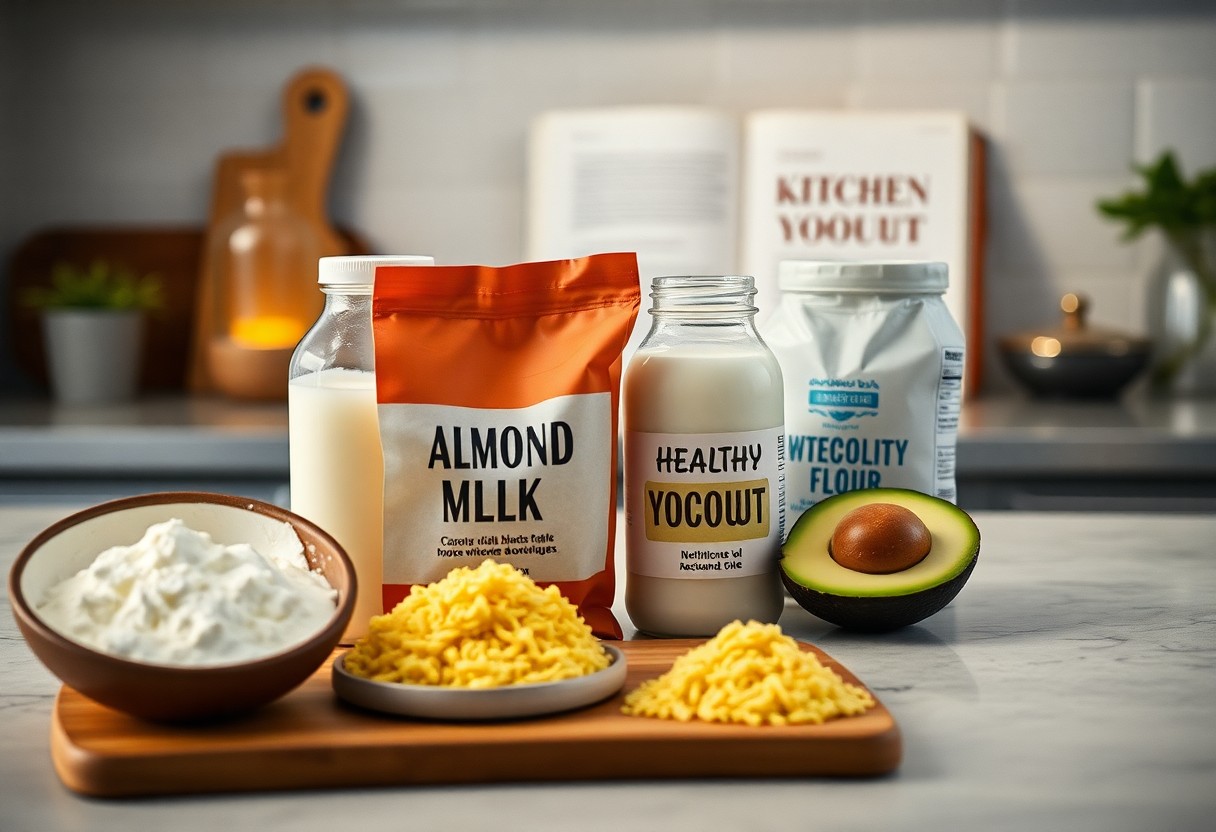
Key Takeaways:
- Fat Alternatives: Use applesauce or mashed bananas instead of oil or butter in baking to reduce fat content.
- Flour Substitutes: Opt for whole wheat flour or almond flour to increase fiber and protein in recipes.
- Sweetener Options: Replace refined sugar with natural sweeteners like honey or maple syrup for a healthier profile.
- Protein Swaps: Incorporate legumes or tofu as meat alternatives to enhance plant-based nutrition.
- Dairy Replacements: Substitute dairy milk with almond, soy, or oat milk to cater to lactose intolerance.
- Sodium Reduction: Use herbs and spices instead of salt to flavor dishes without excess sodium.
- Cooking Methods: Favor steaming or grilling rather than frying for lower fat meal preparation.
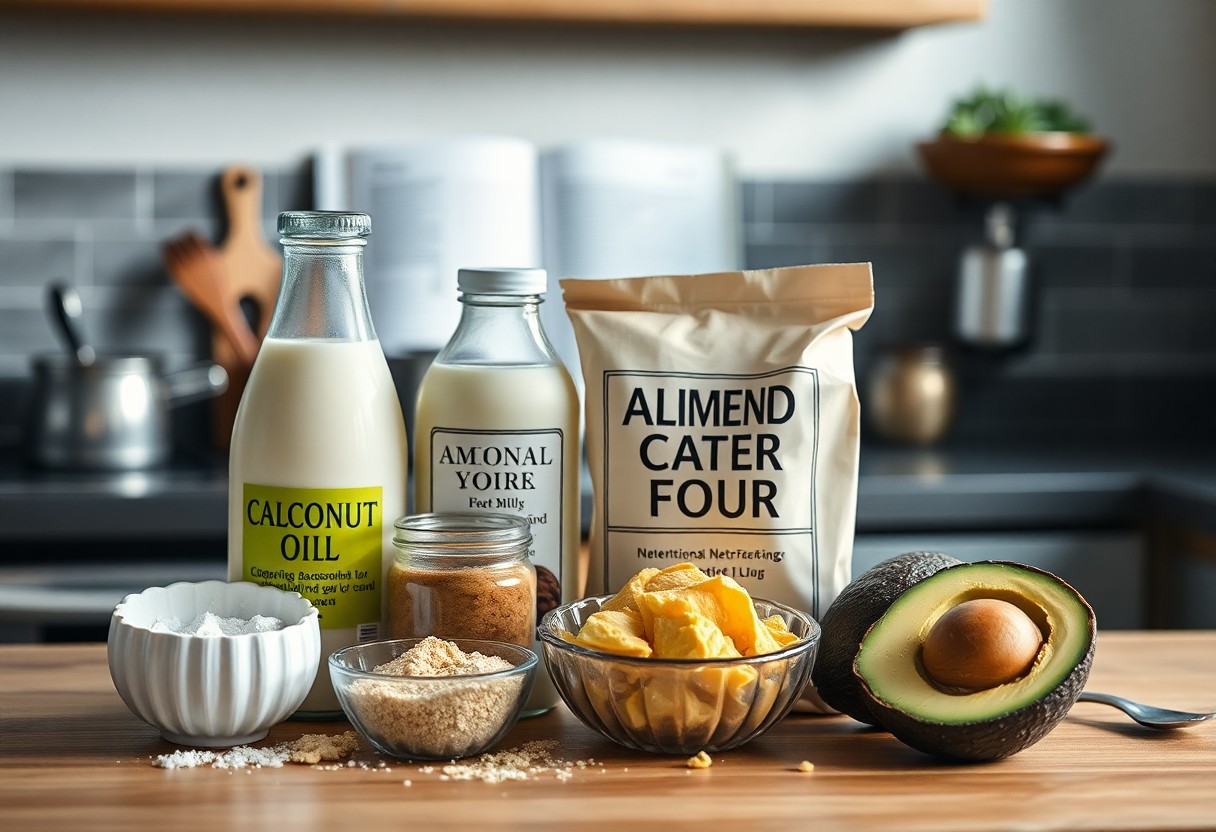
Understanding Healthy Cooking Substitutions
Your ability to make smart cooking substitutions can transform your meals into healthier versions without sacrificing taste. By swapping certain ingredients for more nutritious options, you maintain flavor while promoting better health. Whether you’re reducing calories, cutting sugar, or increasing nutrient intake, understanding how to make these adjustments is key to cooking more healthily.
Types of Substitutions
Your choices for healthier cooking substitutions can fall into several categories:
- Ingredient swaps (e.g., Greek yogurt for sour cream)
- Portion adjustments (e.g., using less cheese)
- Cooking method changes (e.g., baking instead of frying)
- Herbs and spices for flavor boost (e.g., garlic instead of salt)
- Whole grains over refined (e.g., brown rice instead of white)
Perceiving these options can help you evolve your cooking repertoire.
| Substitution Type | Example |
| Fat Replacement | Avocado for butter |
| Sweetener Alternative | Honey for sugar |
| Protein Source | Beans for meat |
| Dairy Swap | Almond milk for cow’s milk |
| Vegetable Increase | Zucchini noodles for pasta |
Key Factors to Consider
Even with the variety of options available, you should consider important factors when making substitutions to ensure a successful outcome:
- Flavor compatibility
- Texture changes
- Nutritional content
- Cooking time adjustments
- Allergies and dietary restrictions
Assume that each substitution may require some experimentation as you find the perfect ratios and combinations for your palate.
Another important aspect is understanding how ingredients interact during cooking. For instance, when reducing sugar, you might need to compensate with other flavorings or moisture:
- Choose ripe fruits for natural sweetness
- Utilize spices like cinnamon for flavor depth
- Monitor baking times when altering fats
- Consider how different ingredients change the final dish’s appearance
- Stay aware of dietary needs and personal preferences
Assume that adjusting your recipe might require additional tweaks for optimal results.
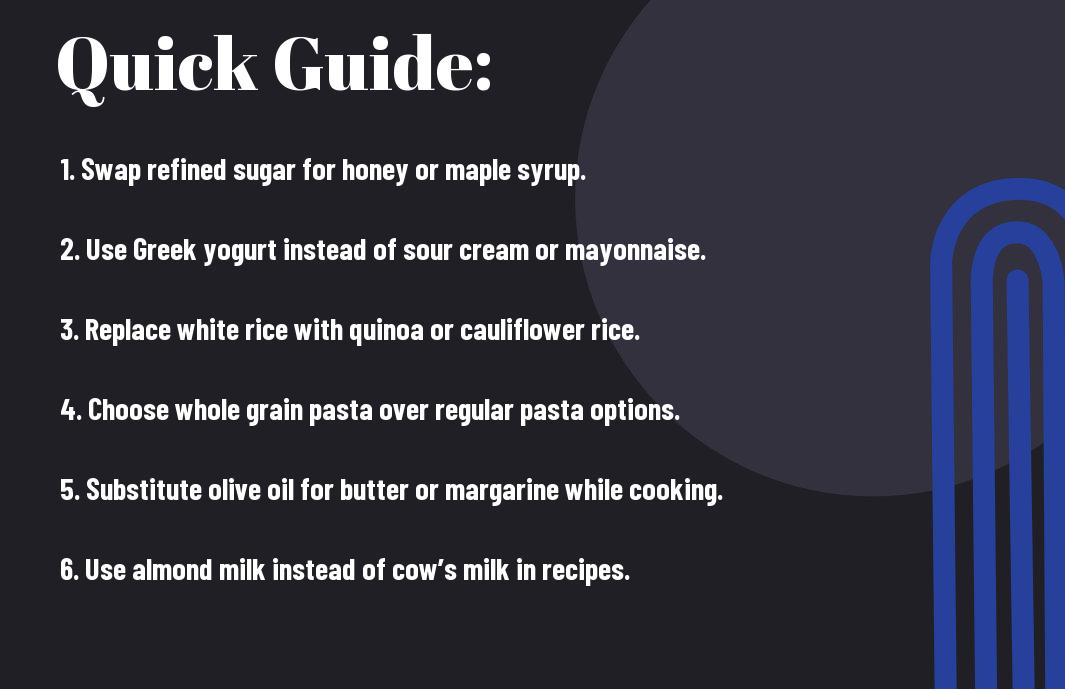
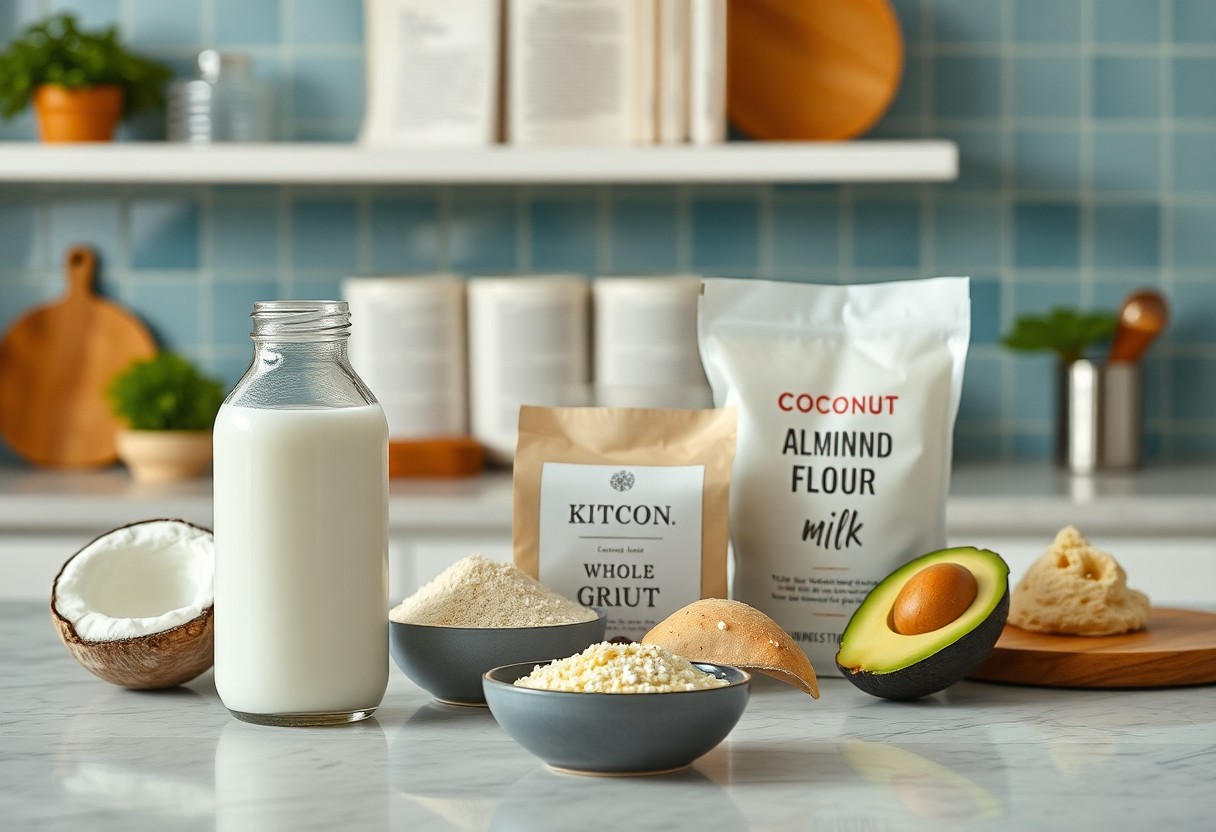
Essential Ingredients: Common Substitutions
While cooking, you have the power to make healthy choices by opting for ingredient substitutions. These alternatives can help you maintain the flavors you love while boosting nutrition. Whether you’re looking to cut calories, reduce allergens, or simply enhance the health benefits of your meals, knowing common substitutions will empower you in the kitchen. Explore options that suit your dietary needs without sacrificing taste or texture.
Dairy Alternatives
Some fantastic alternatives to traditional dairy products can help you enjoy creamy textures and rich flavors without the saturated fat or lactose. Unsweetened almond milk, coconut yogurt, and cashew cheese are just a few examples that can easily replace milk, yogurt, and cheese in your recipes. Explore plant-based options that align with your health goals while still satisfying your palate.
Gluten-Free Options
For those needing to avoid gluten, numerous substitutes can keep your meals both delicious and safe. From gluten-free flour blends to quinoa and rice, the options available are diverse and versatile, allowing you to replicate favorite recipes without the gluten component.
Essential gluten-free options are abundant, making it easier than ever to prepare your favorite dishes without gluten. Consider substituting traditional flours with almond flour, coconut flour, or chickpea flour, all of which provide unique flavors and nutrition. You can also use gluten-free grains such as brown rice, quinoa, or millet as base ingredients for salads, bowls, and side dishes. By incorporating these alternatives, you can maintain a balanced diet that meets your gluten-free requirements while enjoying tasty meals.
Tips for Successful Cooking Substitutions
Unlike common assumptions, making a substitution can be straightforward and rewarding. Here are some key tips to enhance your cooking experience:
- Understand the purpose of the ingredient you’re replacing.
- Start with smaller quantities when experimenting.
- Be prepared for slight variations in texture and flavor.
- Keep notes on what works for future reference.
Any successful cook will tell you that practice leads to mastery.
Flavor Enhancements
The right substitutions can drastically elevate the flavor of your dishes. Experiment with herbs, spices, and acids like lemon juice or vinegar to add depth and excitement. For example, replacing salt with a dash of smoked paprika can introduce a new dimension without compromising on taste.
Nutritional Balance
To achieve a well-rounded meal, it’s imperative to consider the nutritional value of your substitutions. Look for alternatives that provide imperative vitamins, minerals, and healthy fats.
It’s beneficial to analyze the nutritional profiles of your original ingredients and their substitutes. For example, if you swap white rice for quinoa, you gain more protein and fiber. Incorporating a variety of whole foods, including fruits, vegetables, whole grains, and lean proteins, ensures that your meals are not only tasty but also nourishing, helping you sustain a healthy lifestyle.
Step-by-Step Guide to Common Substitutions
All cooks encounter the need for substitutions in the kitchen, making it vital to have a reliable guide. This section provides an overview of simple swaps that can enhance your health without sacrificing flavor. You can explore more in the Healthier Recipes Are Easy – Substitutions Guide. Below is a breakdown of common swaps for health-conscious cooking.
| Ingredient | Substitute |
|---|---|
| Butter | Applesauce |
| White sugar | Honey or maple syrup |
| Heavy cream | Coconut milk |
| White flour | Whole wheat flour |
Cooking Techniques
Substitutions can extend beyond ingredients to cooking techniques as well. For instance, steaming vegetables instead of frying can reduce calories and enhance nutrient retention. You may find that grilling or baking also yields flavorful, healthier results compared to cooking in oils.
Ingredient Pairings
Techniques for pairing ingredients are important in developing flavors while maintaining health. You can often substitute higher-calorie items with nutrient-dense options. For example, combining legumes with grains can create a complete protein source while using less meat in your meals.
A fantastic way to enhance your cooking without added fat is to pair fruits and vegetables with whole grains, which can create satisfying dishes full of flavor and nutrition. Using herbs and spices can also bring out the best in your dishes while allowing you to reduce sodium from your cooking. Experimenting with different pairings can transform your meals into exciting, healthy options.
Pros and Cons of Common Substitutions
Many people turn to substitutions to make their cooking healthier, but it’s important to weigh the pros and cons. Below is a comprehensive table to help you evaluate common substitutions you might consider making in your kitchen.
Pros and Cons of Common Substitutions
| Pros | Cons |
|---|---|
| Reduced calories and fat. | Sometimes alters flavor and texture. |
| Enhanced nutritional profile. | May require additional adjustments in recipes. |
| Easier weight management. | Not all substitutions are universally liked. |
| Increased fiber intake. | Can be more expensive (e.g., nut milk vs. dairy). |
| Suitable for various dietary restrictions. | May impact cooking time or methods. |
| Fosters creativity in cooking. | Not all options offer the same health benefits. |
Health Benefits
On your journey to healthier cooking, effective substitutions can significantly enhance your meals’ nutrition. Incorporating ingredients like Greek yogurt, whole grains, or plant-based oils can help reduce unhealthy fats and increase vitamins and minerals in your diet. These small changes can also contribute to better digestion and sustained energy levels.
Potential Drawbacks
Pros of substitutions often come with some potential drawbacks. While many substitutions may improve health, they can also affect the taste and texture of your dishes. For example, using applesauce instead of oil in baked goods can result in a denser texture, which you may or may not enjoy. Additionally, some alternatives can be more costly, and not every replacement offers a significant nutritional advantage. It’s necessary to experiment and find the right balance that works for your taste preferences and dietary goals.
Potential drawbacks can also arise from limited availability or lack of familiarity with certain substitutes. You might find it challenging to source particular ingredients, which could derail your cooking plans. Furthermore, while some healthier options are nutritious, they might not deliver the same satisfaction as traditional ingredients, leading you to crave the original flavors. Understanding these nuances can help you navigate through your cooking substitutions effectively.
Frequently Asked Questions
After exploring the vital healthy cooking substitutions, you may still have questions. For a deeper understanding, check out An Essential Illustrated Cooking Substitutions Guide to enhance your cooking experience and make informed choices in the kitchen.
Substitution Myths
There’s a lot of misinformation surrounding cooking substitutions that can lead to less-than-ideal results in your meals. Many believe that any ingredient can be swapped for another without considering flavor profiles or cooking properties, which can impact the final dish.
Expert Recommendations
Any successful substitution should take into account the specific flavors and textures of your ingredients. Utilizing expert guidance can help you create a delicious meal that aligns with your dietary goals without sacrificing taste.
The best approach is to start with similar flavor profiles or texture characteristics and consider the cooking method you are using. For example, if you’re replacing oil, consider the richness of avocado or nut butter instead. Engaging with seasoned chefs or reliable resources can empower you to make discerning choices in your substitutions, guaranteeing both health benefits and culinary satisfaction.
Final Words
As a reminder, adopting healthy cooking substitutions can significantly enhance your meals while maintaining flavor and nutrition. By implementing these simple swaps in your kitchen, you not only make smarter choices for your health but also create delicious dishes that everyone can enjoy. Experimenting with different alternatives empowers you to explore a variety of tastes and textures, making your cooking experience more enjoyable and fulfilling. Embrace these substitutions and watch your meals transform into healthier, delectable options that support your well-being.
FAQ
Q: What is an Essential Healthy Cooking Substitutions Guide?
A: An Essential Healthy Cooking Substitutions Guide is a resource that provides alternatives for common cooking ingredients. It helps individuals make healthier choices while maintaining the flavor and texture of their favorite dishes. This guide can assist those looking to reduce calories, sugar, or unhealthy fats without sacrificing taste in their cooking.
Q: Why should I use a substitutions guide when cooking?
A: Using a substitutions guide allows you to adapt recipes to fit various dietary needs or preferences. Whether you’re following a specific diet, have allergies, or simply want to make healthier choices, a substitutions guide offers practical solutions to make your meals more nutritious.
Q: What are some common cooking ingredient substitutions found in the guide?
A: Common substitutions include using Greek yogurt instead of sour cream, avocado in place of butter, or honey instead of sugar. Each substitution typically offers a healthier profile while still enriching the dish’s overall flavor and texture. The guide provides a comprehensive list of these alternatives for easy reference.
Q: Can I use the substitutions guide for baking as well?
A: Yes, the guide is applicable for both cooking and baking. Many baking ingredients can be swapped for healthier options, such as using whole wheat flour instead of all-purpose flour, applesauce in place of oil, or oat milk as a dairy substitute. These modifications can enhance nutritional value without compromising the quality of baked goods.
Q: How do I know if a substitution will work in a specific recipe?
A: While most substitutions can effectively replace the original ingredient, some may require minor adjustments in cooking times or additional ingredients. It’s advisable to start with trusted substitutions that are known to work well, and then experiment based on your unique preferences and experiences with the dish.
Q: Are there any vital cooking techniques to consider with substitutions?
A: Yes, when using substitutions, it’s important to consider the cooking method, such as whether an ingredient needs to be sautéed, baked, or boiled. The moisture content and texture of the substitute can also impact cooking time and overall outcome. The guide often provides recommendations on the best methods to enhance the substituted ingredients for optimal results.
Q: Where can I find an Essential Healthy Cooking Substitutions Guide?
A: You can find an Essential Healthy Cooking Substitutions Guide in various forms, including cookbooks, online blogs, and nutrition websites. Many health-conscious cooking platforms and registered dietitians offer easy-to-access charts and lists that can be printed or saved for convenient use in your kitchen.
